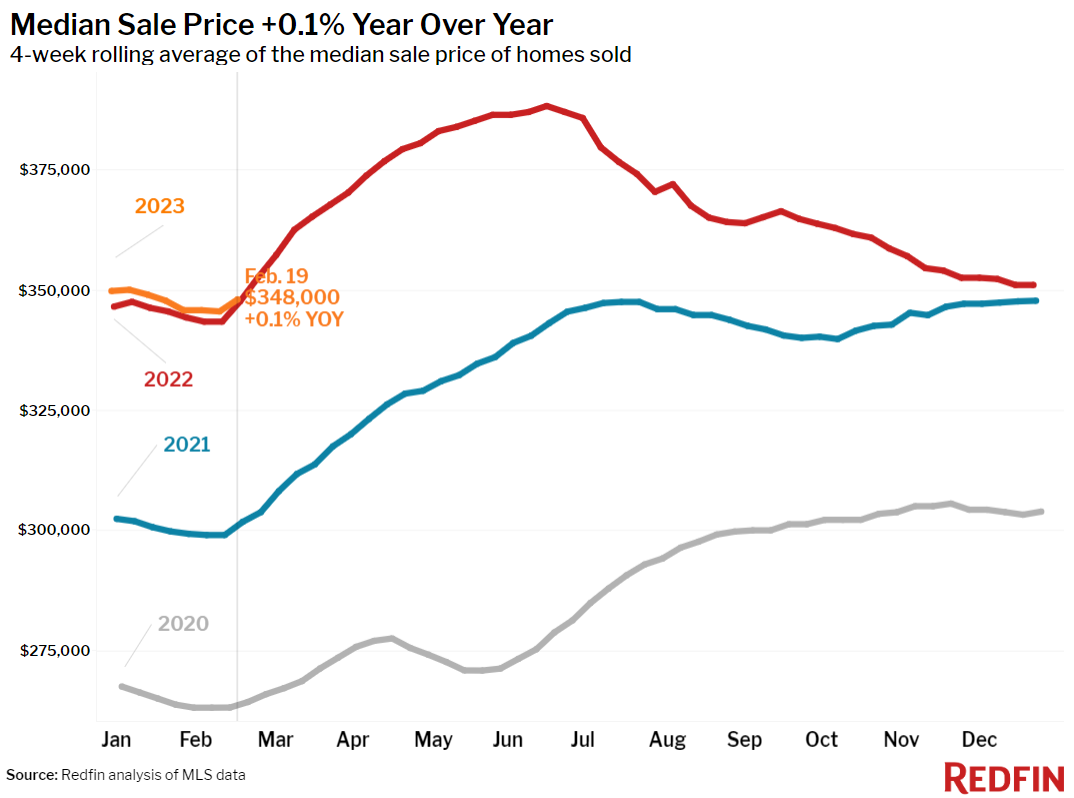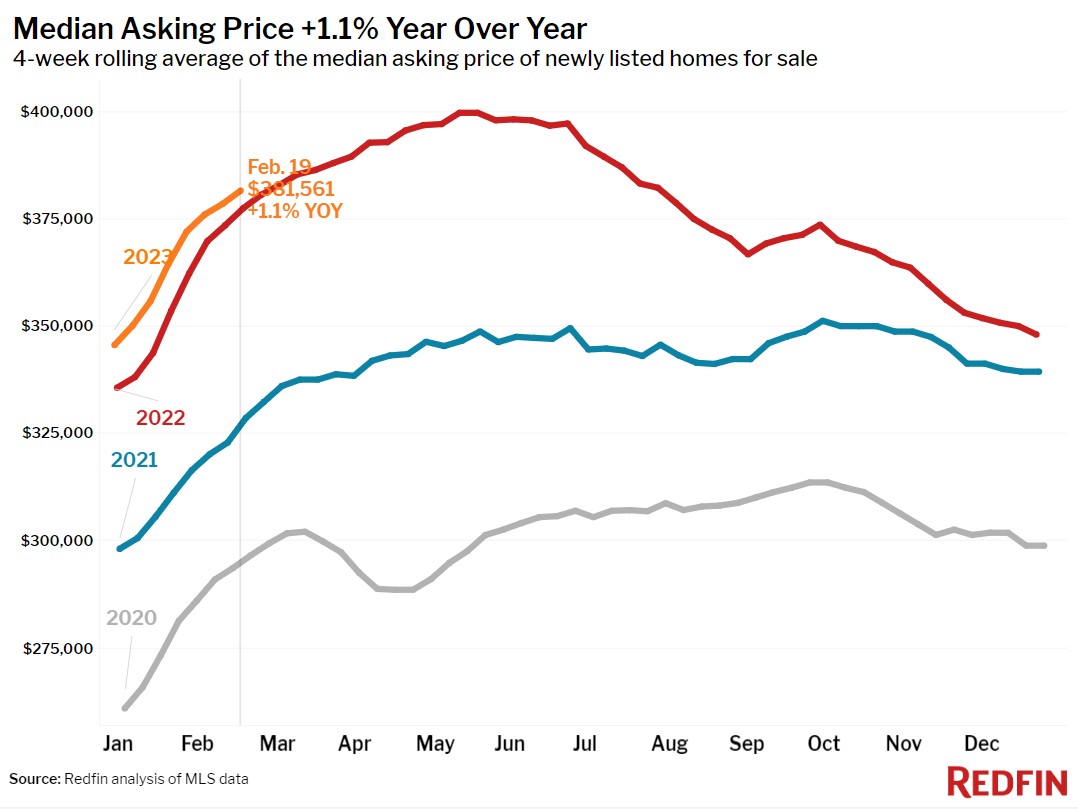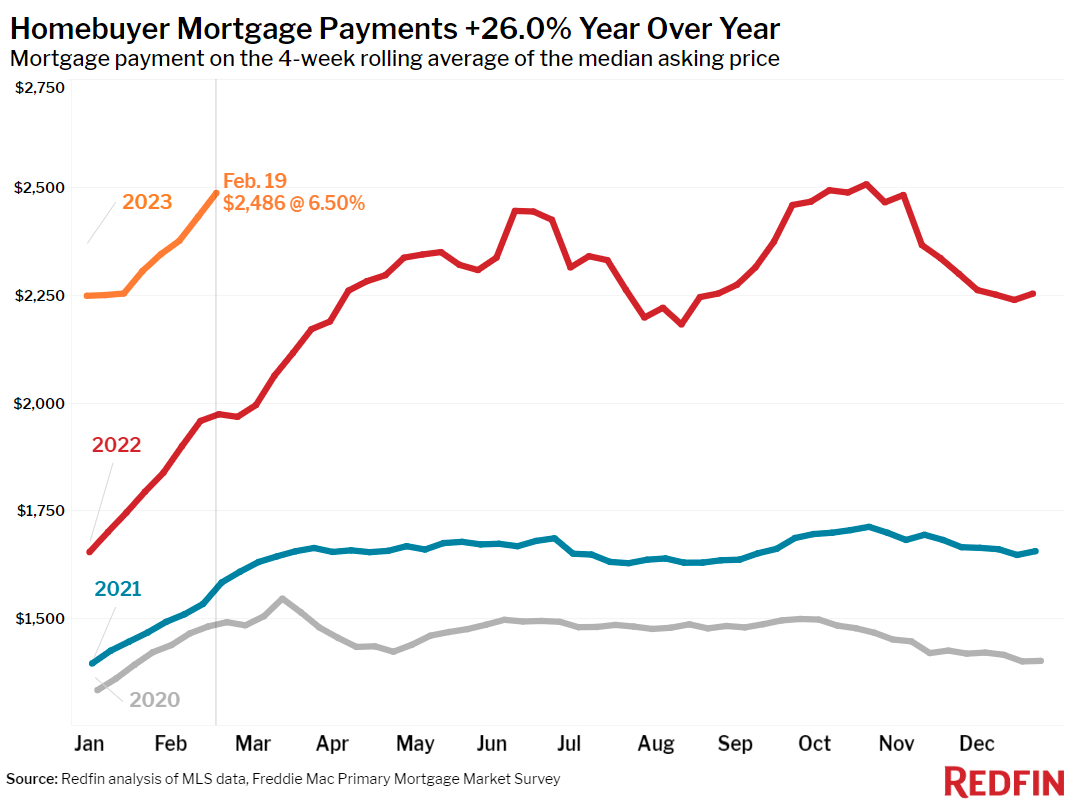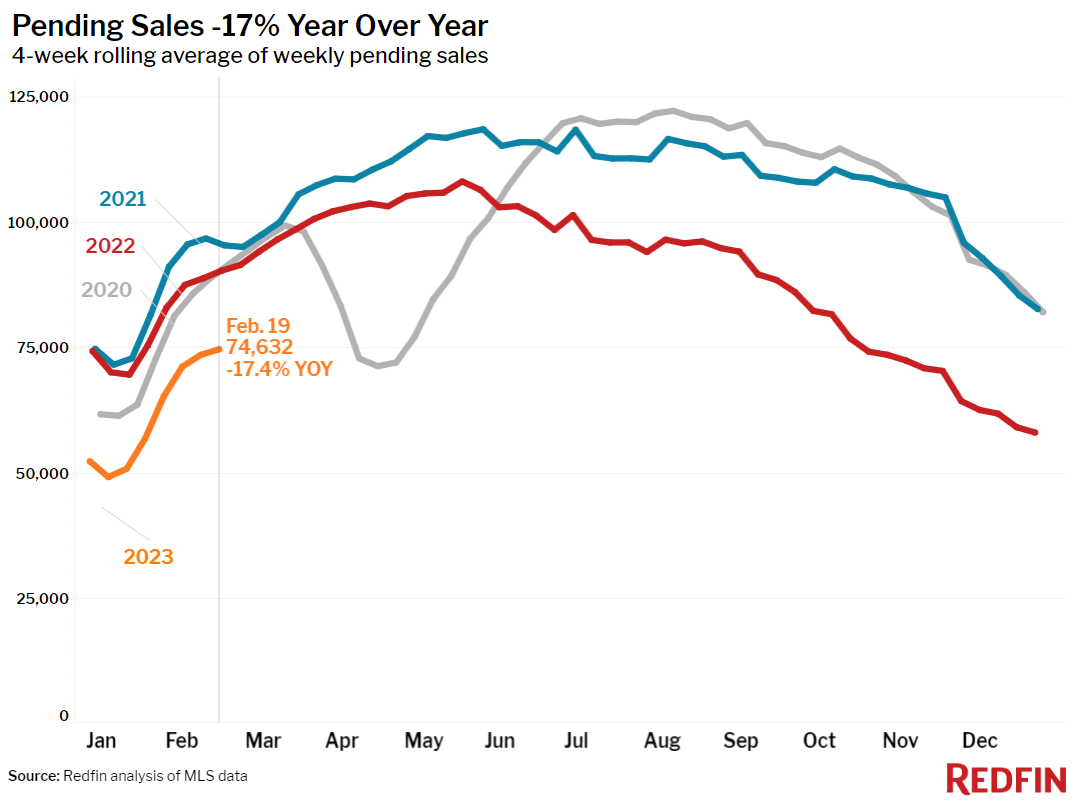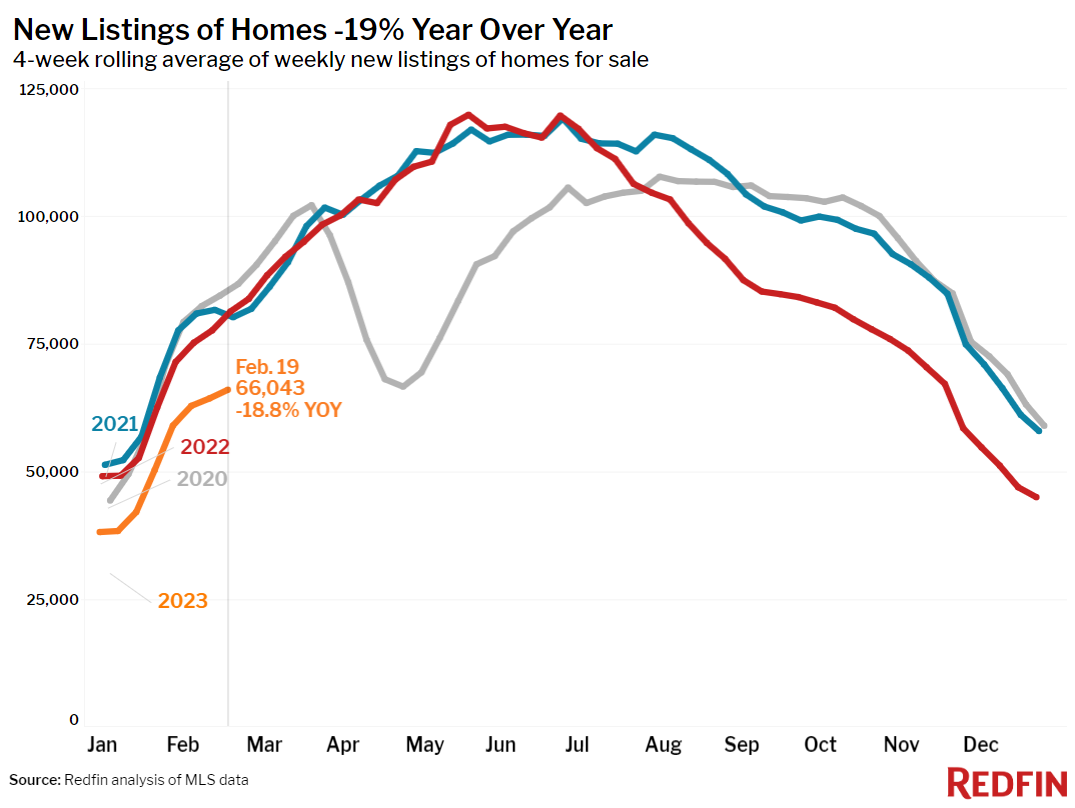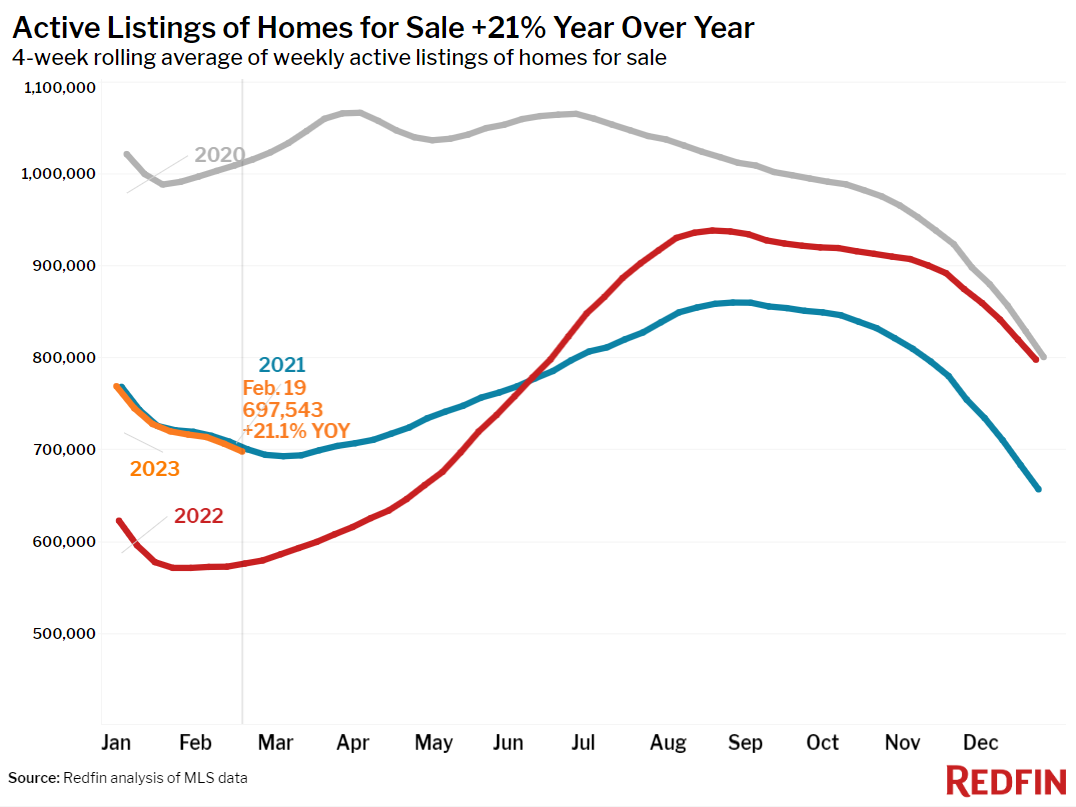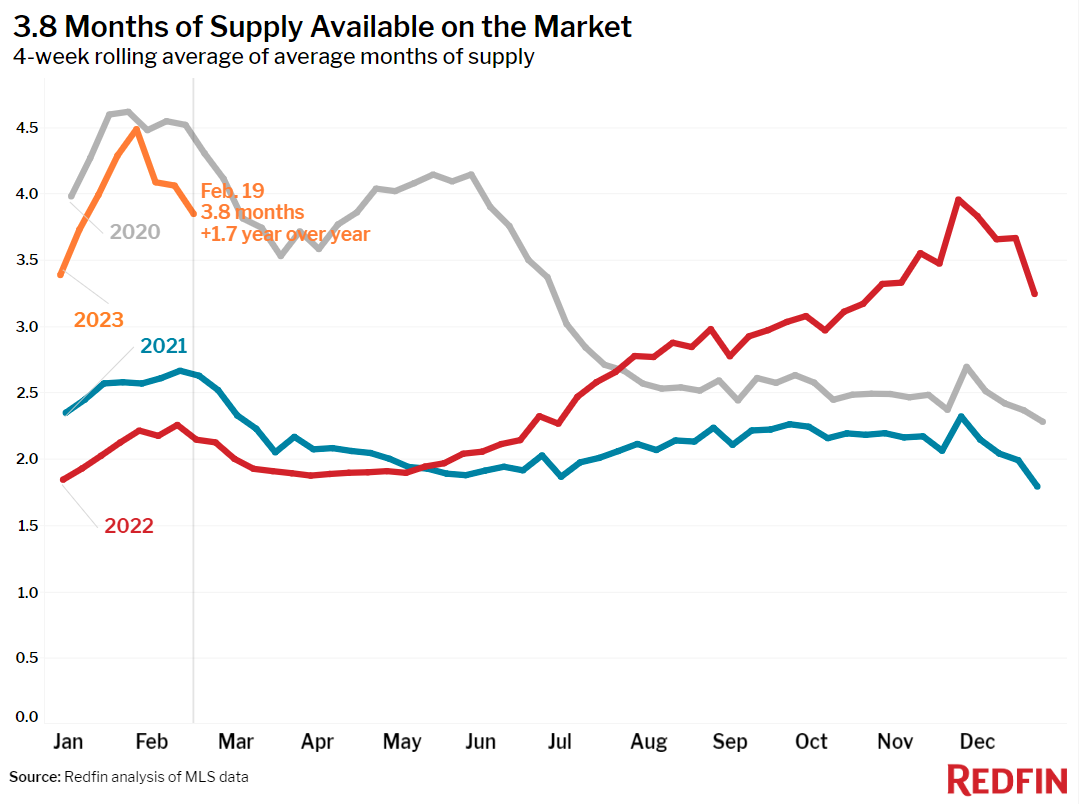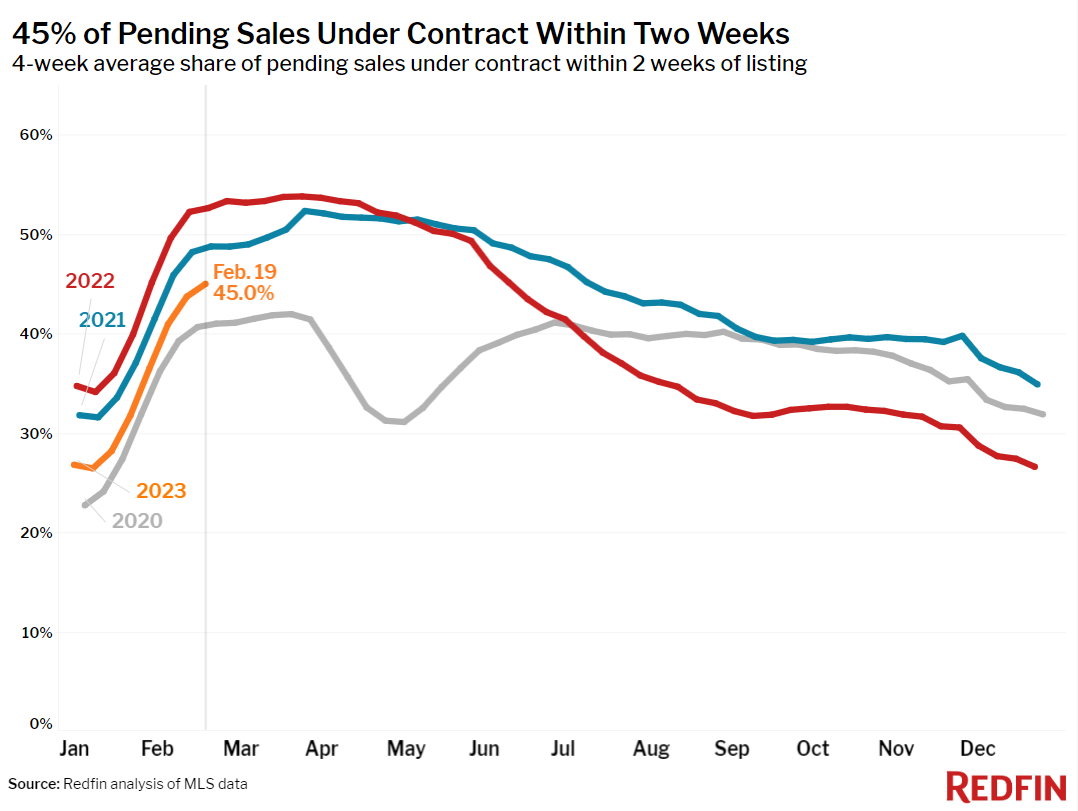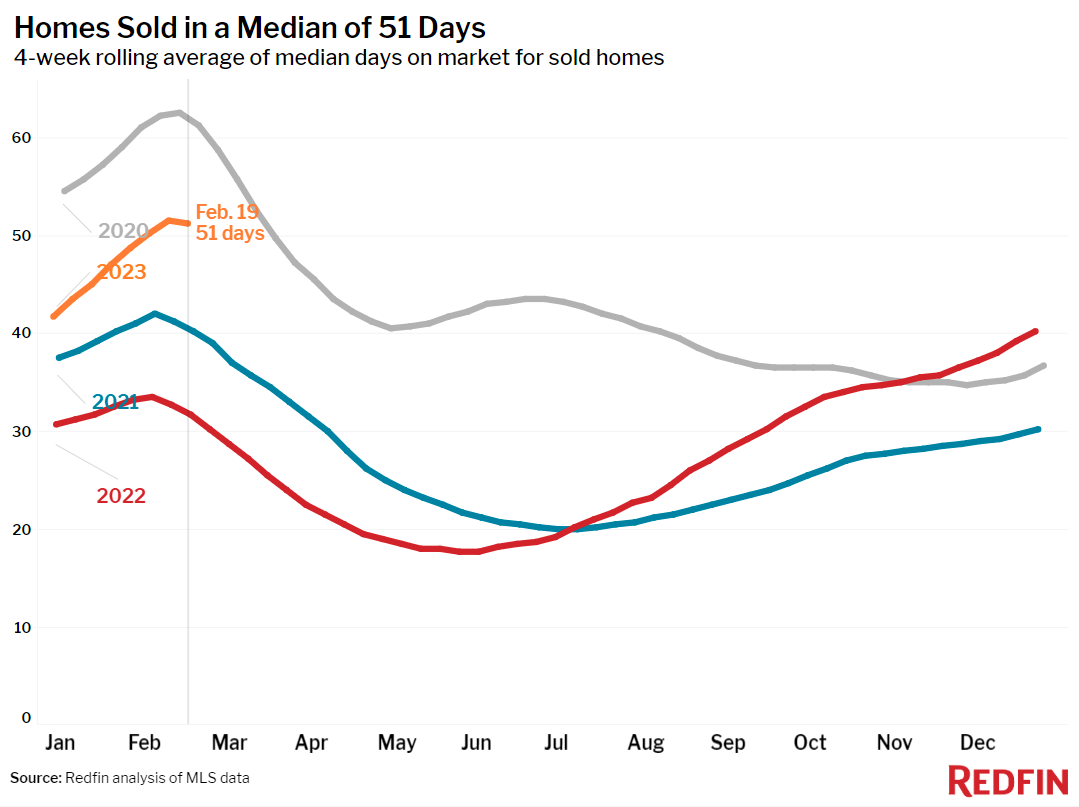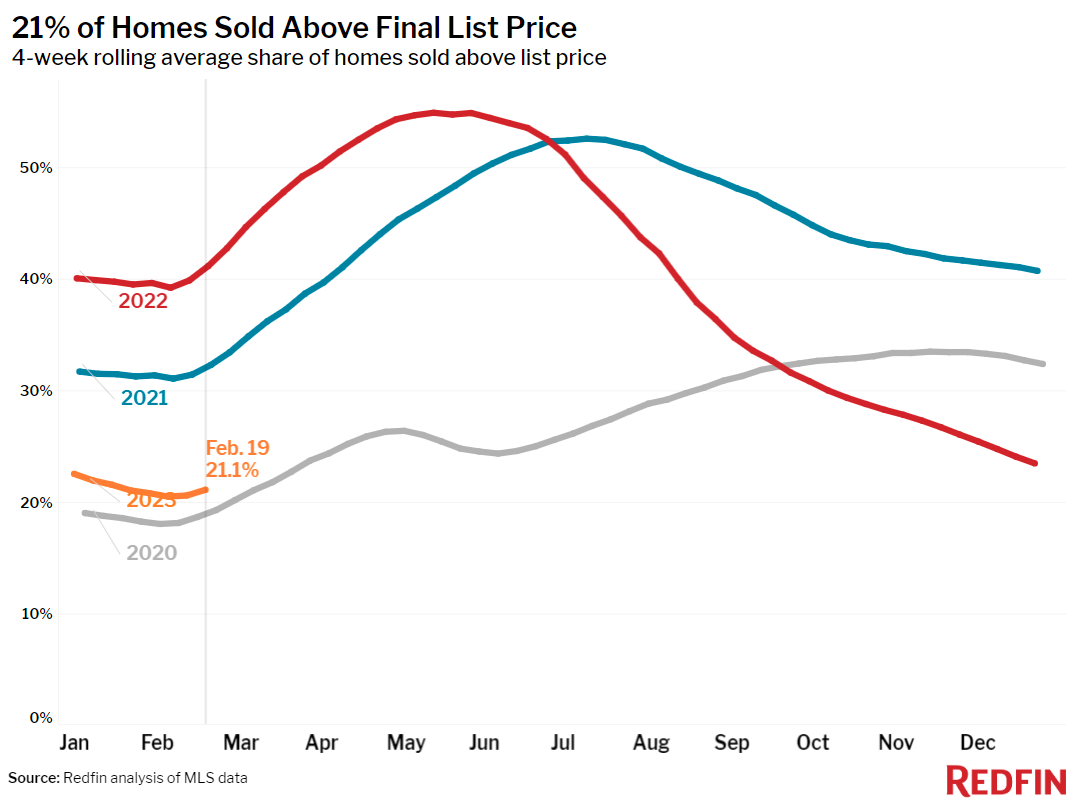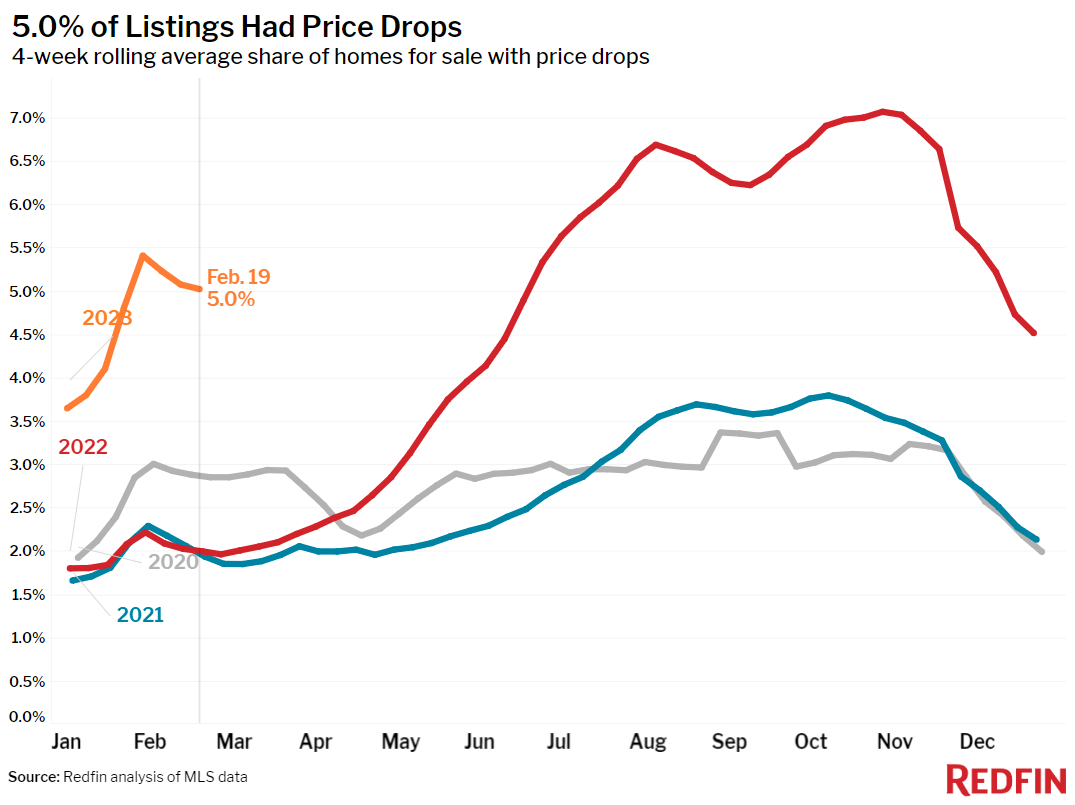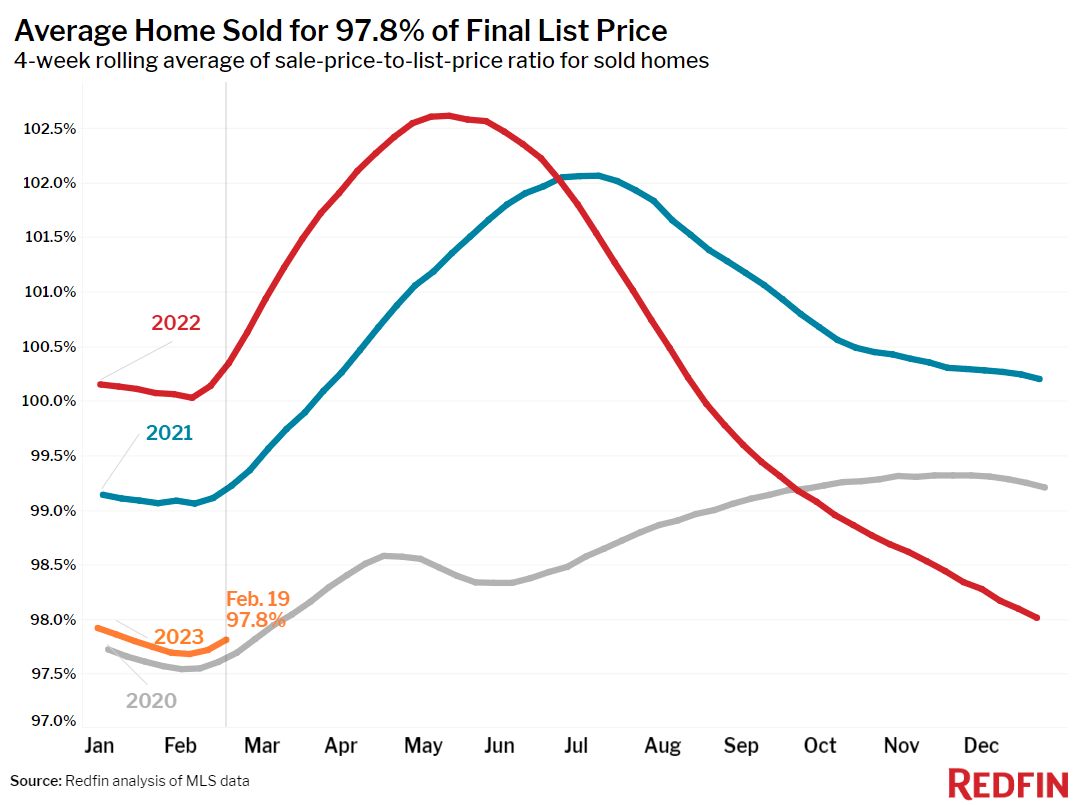As mortgage rates rise, serious homebuyers are scarce. But plenty of people are searching for homes online and touring them, waiting until rates decline to buy.
The median U.S. home-sale price was $348,000 during the four weeks ending February 19, essentially unchanged (+0.1%) year over year. That’s the first time since at least 2015, when the data for this report begins, the typical home isn’t selling for more than it would have a year earlier.
Prices are very close to falling on a year-over-year basis because serious homebuyers are scarce as mortgage rates approach the high-6% range. Mortgage-purchase applications dropped to their lowest level since 1995 last week as stubbornly high inflation caused rates to jump for the second week in a row, pricing many would-be buyers out of the market.
The typical monthly mortgage payment nationwide is $2,486 with today’s average rate, just $20 shy of October’s record high and up 26% year over year. Put another way, a homebuyer with a $2,500 monthly budget can afford a $384,000 home, compared with the $518,000 home that same buyer could have purchased with the 3% rates common in 2021. That leaves sellers with just one option to lure buyers: Lower their asking price.
Early indicators of homebuying demand show that there are plenty of people searching for homes, with online searches of homes for sale and home tours up notably from the end of last year. But those home searchers are holding off on the more serious steps of applying for a mortgage and making offers.
“Affordability is weighing heavily on would-be buyers, with the uptick in mortgage rates and still-high prices giving them pause,” said Redfin Deputy Chief Economist Taylor Marr. “More people will take the plunge and buy the homes they’re looking at online and in person when housing costs come down enough to fit their budget. But we don’t know when that will happen; where mortgage rates go from here depends largely on inflation. When inflation does slow down enough to bring rates back down, there’s a pool of sidelined buyers who will be waiting to jump back in. Those buyers will still be limited by a lack of homes for sale, though–new listings are down by double digits.”
Unless otherwise noted, the data in this report covers the four-week period ending February 19. Redfin’s weekly housing market data goes back through 2015.
Refer to our metrics definition page for explanations of all the metrics used in this report.
